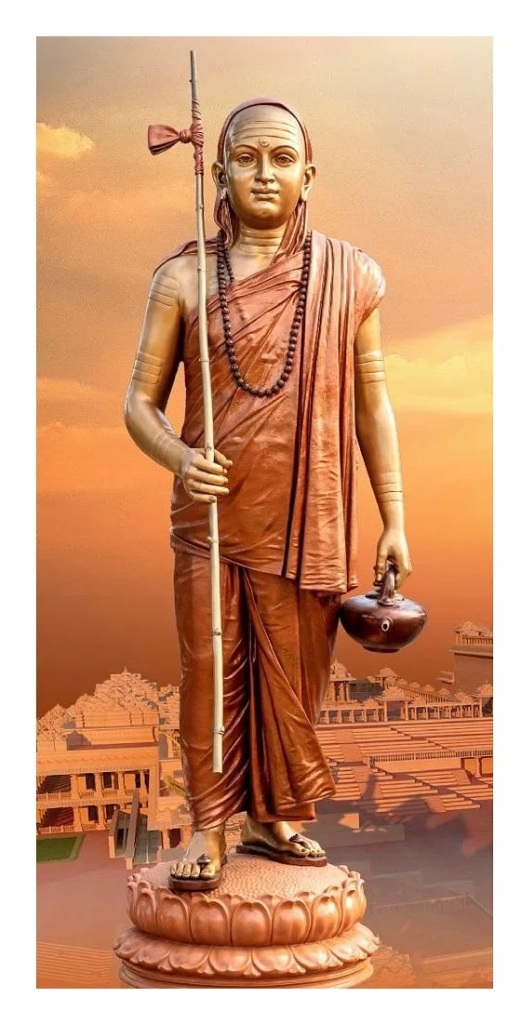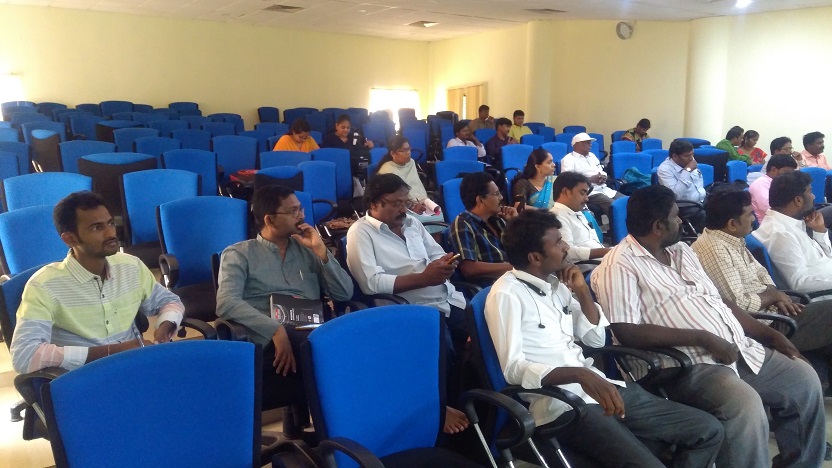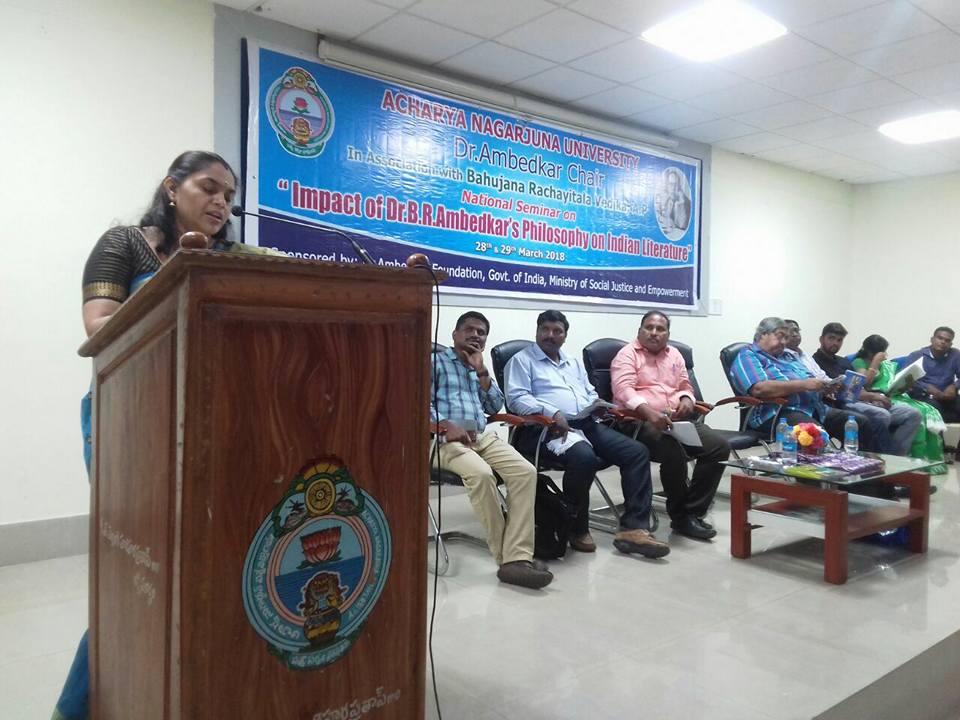What historians and archaeologists could learn from the installation of 108 feet high Adi Shankara statue at Omkareshwar (2)

Ekatma Yatra- People movement started from 2018[1]: Dikshu Kukreja, the Managing Principal of CP Kukreja Architects and the creative mind behind this cultural endeavour, shared with PTI[2], “This extraordinary structure, conceptualized to honour the life and philosophy of Adi Shankaracharya, is a tribute to the great saint’s masterpiece of commentary on ‘Bharmasutra-bhasya.” He further added, “This cultural project will fulfil the much-treasured vision of PM – ‘Vasudaiva Kutumbakam (The world is one family).’ With this 108-foot-tall statue, Madhya Pradesh will consolidate its position as a cultural and spiritual hub for all religions.” The Madhya Pradesh government previously greenlit a project worth Rs 2,141.85 crores, encompassing the construction of the Adi Shankaracharya statue and the establishment of a museum in Omkareshwar. The genesis of this statue project can be traced back to 2018 when artist Vasudev Kamath from Sholapur created the initial design. Subsequently, an extensive public rally and processions named “Ekatma Yatra” spanned approximately 23,000-gram panchayats across the state, involving active community participation to collect the necessary metal for crafting the statue. This distinctive collaboration exemplifies the essence of a public-private partnership. The public participation has been unique in the context, turning into a people movement and therefore, every person, who contributed even 1 gm of metal, would feel that his contributed metal was also used in the casting and manufacture of Adi Shankara statue installed.

Team Shankar Project: The entire team for the project has been named Team Shankar. The project was first conceptualised when CM Chouhan started his Narmada Yatra. He had announced on February 9, 2017 that the state government will be committed to disseminating the teachings of Shankaracharya. Adi Shankaracharya was born in Kalady, Kerela. Leaving his family at an early age in search for wisdom and knowledge, he travelled thousands of miles covering present-day Tamil Nadu, Karnataka, Andhra Pradesh, Telangana, Maharashtra and Chhattisgarh, before setting foot in Madhya Pradesh at Amarkantak, the origin point of river Narmada. He reached Omkareshwar after walking along the banks of Narmada for days. Adi Shankaracharya is said to have spent four years in Omkareshwar before leaving for Kashi. The statue is said to depict this journey.

The 108 feet statue manufactured and installed in 2023: The processes involved in the whole project have been with many experts with their contribution. The usage of modern machinery, machines, computer graphics, design and the actual work prove the diligent execution. Through videos, the drone pictures and other sketches clearly prove the fact. Now, for a modern man, perhaps, he can understand how the work has been executed from blueprint level to final installation and finishing. However, it has to be noted that the statue has not been monolith or made of a single cast or mould. In fact, as detailed above, it has been made of many pieces, lifted with cranes and material handling equipment, fitted in the position, as per their drawings. Then, the joints were meticulously welded and finished. Thus, the parts were fitted from top to bottom and the work was completed.

The 57 feet statue manufactured and installed in 983 CE: On the other hand, the Gommateshwara statue is a 57-foot (17 m) high monolithic statue on Vindhyagiri Hill in the town of Shravanbelagola in the Indian state of Karnataka. Carved of a single block of granite, it is one of the tallest monolithic statues in the ancient world. When Mahamastakabhisheka of the statue was conducted in 2018, one could have noticed how the podium at the top of the statue was constructed to carry out the “abhisheka” with various liquids, flowers etc. When it was built around 983 CE during the Western Ganga dynasty, –
- how it could have been carved with a single stone, the selection of such stone without any defect, how it was taken out from the mountain etc…
- who and where the diagram was drawn with technical details, who were such experts – stapatis, stone workers etc..
- whether it was done (chiselled, carved and manufactured ) by keeping the monolith horizontally or vertically,
- how the sculptors could have carried such work meticulously without any mistake,
- what type of tools (high tensile with different dimensions, particularly, chisels, drills etc) and machinery used,
- how the scaffoldings and other supporting structures were erected, used and executed for the completion of the work, etc.,
have to be thought of and possible answers given for modern-day understanding.
What was the science and technology used in 983 CE?: If these two statues are compared in the point of carving, erection and installation, the science and technology behind them have been amazing, spectacular and challenging. Some 1040 years back [2023-983=1040] when the work was carried out meticulously, it is evident that all such processes were carried on with the similar “men and machinery,” however, though we could imagine about the “men,” the usage of “machinery” was intriguing, mysterious and unexplained. Therefore, the modern-day experts of “experimental archaeology,” “salvage archaeology” etc., should come out and find out the answer. That the outcome is there has been a fact, the existence of similar science and technology behind was also a fact. Just because, now we could not be in a position to explain properly, it does not mean that such science and technology were not there.

The conservation, preservation and restoration work carried on by the ASI and other agencies: during the last 75 years, from the reports of ASI, respective states and private agencies, how the conservation, preservation and restoration work carried on could be studied carefully and noted the technical processes involved. Thus, it is evident that ordinary students, teachers and even professors of history and archaeology cannot do such work, unless they are trained. However, the technical personnel with respective qualification and experience could carry on such jobs immediately and easily. Even these experts could not carry out their job, unless the material handling equipment and the respective personnel come and do their job. In every excavation work, most of the hard work –
- the real cleaning of the site chosen,
- digging, removing debris, earth and sand;
- dumping them at a distance;
- cleaning, segregating and taking out portshreds and other required materials;
- drawing sections, taking photographs and videographing of the work carried on and recording the in situ position in the sedimentary layers, and condition of the embedded objects discovered.
- removing rocks, slabs etc., by the cranes, bokline etc.,
- bringing bricks, slabs etc.,in the case of repairs, maintenance, restoration, renovation……
- taking the samples carefully and packing in saches, containers
- taking them immediately or within time limits to laboratories and giving for testing, dating etc…

Cause and effect – have to be studied scientifically to match with history and chronology: The principles of “cause and effect” are applied in the disciplines of ontology, teleology, cosmology, cosmogony, theology and related subjects. Of course, they are scientifically and technologically easily felt, experienced and known easily. “Once bitten, twice shy” works in the case of heat, electricity, electrical shock, sharp edges, slippery paths and so on.
- Cause is understood as the reason, grounds, source, root, basis, foundation and origin.
- Effect is realized as outcome, result, consequence, answer and end / final product.
Thus, when huge structures are seen, it can be decided as to whether they have been of man-made, machine-made, nature-made or otherwise.
- Particularly, in India, there have been artefacts made of stone and metal of various sizes, shapes and conditions found at the length and breadth of ancient India separated by 1000, 2000 and 3000 kms distances.
- Yet, they have a commonality in many features, identifiable characteristics and with established standards.
- Therefore, definitely, the existence of many stone and metal workers, labourers, employees, smiths, carpenters, miners, casters, forgerers, engineers, drawers, hewers, painters, and a host of other expertise from the IVC through Mahajanapada, Maurya and other periods is established.
- That the literature, though, composed and written in many languages, the contents, embedded characters and principles conveyed have commonality.
- Therefore, for the made-made structures, definitely, there had been tools, gadgets and machinery with the application of science and technology.
- Above all, their movement from one place to another is also understood, as without which none could have happened.
- Thus, universities, colleges and schools were there where different disciplines were taught; the Bower and Bhakshali manuscripts have been historical evidence for mathematical and medical courses taught (they are actually notebooks of the students)
© K. V. Ramakrishna Rao
22-09-2023

[1] Outlook, All About The 108-Foot Adi Shankaracharya Statue Unveiled By CM Shivraj Chouhan, Outlook Web Desk, UPDATED: 21 SEP 2023 10:04 AM
[2] https://www.outlookindia.com/national/all-about-the-108-foot-adi-shankaracharya-statue-to-be-revealed-by-cm-shivraj-chouhan-today-news-319548

Filed under: Maha mastakabhisheka, Mahamastakabhisheka | Tagged: adi sankara, Adi Shankara, advaita, alloy, astadhatu, brass, bronze, copper, debate, discussion, Dvaita, eitht-metallic alloy, ekatma, ekatma dham, ethics, kaladi, Maha mastakabhisheka, Mahamastakabhisheka, morality, narmada, omkareswar, philosophy, sankara, sankaracharya, statue, statue of oneness, tin, zinc | Leave a comment »




























